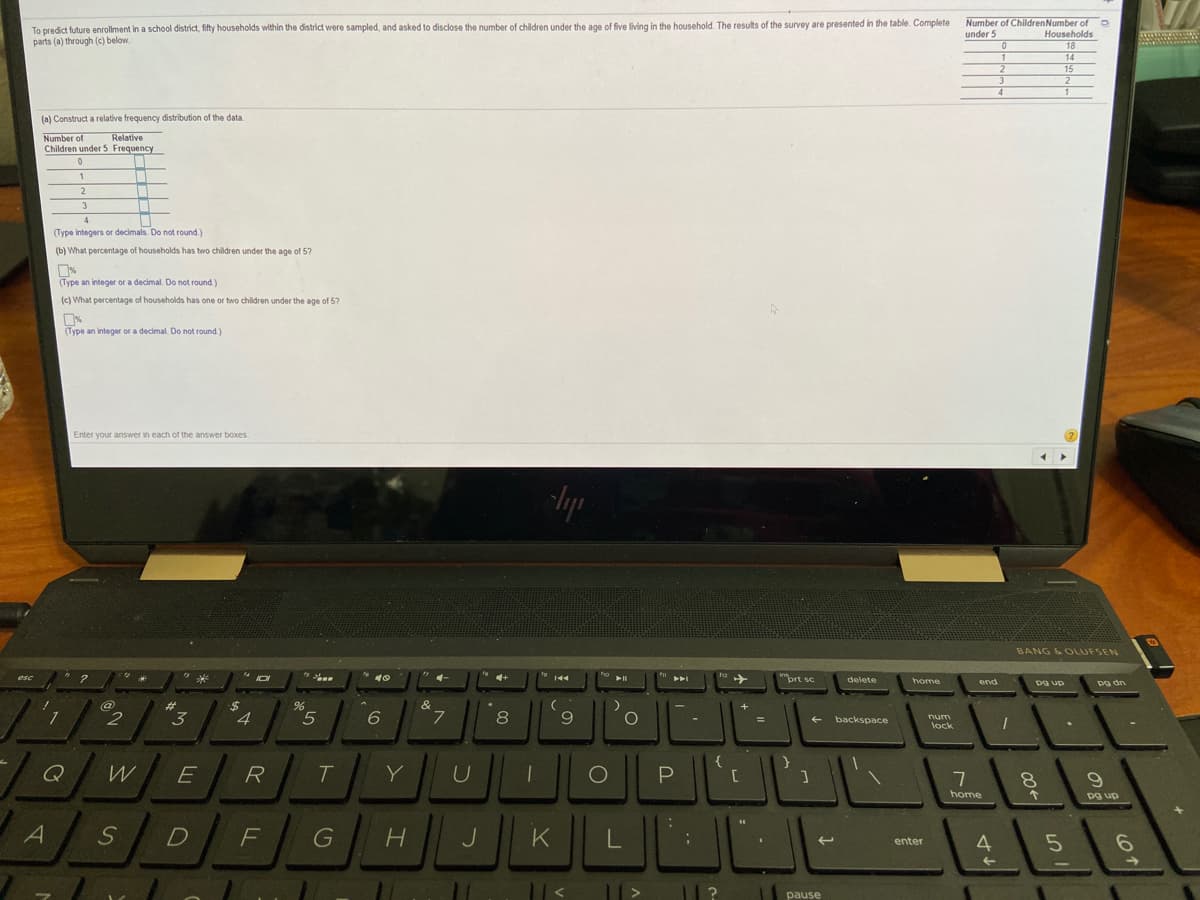To predict future enrollment in a school district, fifty households within the district were sampled, and asked to disclose the number of children under the age of five living in the household. The results of the survey are presented in the table Complete parts (a) through (c) below. Number of ChildrenNumber Household 18 under 5 14 15 (a) Construct a relative frequency distribution of the data. Number of Children under 5 Frequency Relative 2 (Type integers or decimals. Do not round) (b) What percentage of households has two children under the age of 57 (Type an integer or a decimal. Do not round) (c) What percentage of households has one or two children under the age of 57 (Type an integer or a decimal Do not round.)
To predict future enrollment in a school district, fifty households within the district were sampled, and asked to disclose the number of children under the age of five living in the household. The results of the survey are presented in the table Complete parts (a) through (c) below. Number of ChildrenNumber Household 18 under 5 14 15 (a) Construct a relative frequency distribution of the data. Number of Children under 5 Frequency Relative 2 (Type integers or decimals. Do not round) (b) What percentage of households has two children under the age of 57 (Type an integer or a decimal. Do not round) (c) What percentage of households has one or two children under the age of 57 (Type an integer or a decimal Do not round.)
Glencoe Algebra 1, Student Edition, 9780079039897, 0079039898, 2018
18th Edition
ISBN:9780079039897
Author:Carter
Publisher:Carter
Chapter10: Statistics
Section10.4: Distributions Of Data
Problem 19PFA
Related questions
Topic Video
Question
Qq2

Transcribed Image Text:To predict future enrollment in a school district, fifty households within the district were sampled, and asked to disclose the number of children under the age of five living in the household. The results of the survey are presented in the table. Complete
parts (a) through (c) below.
Number of ChildrenNumber of
Households
18
under 5
15
(a) Construct a relative frequency distribution of the data.
Number of
Children under 5 Frequency
Relative
3
(Type integers or decimals. Do not round.)
(b) What percentage of households has two children under the age of 5?
(Type an integer or a decimal. Do not round.)
(c) What percentage of households has one or two children under the age of 5?
(Type an integer or a decimal. Do not round.)
Enter your answer in each of the answer boxes.
BANG &OLUFSEN
"prt sc
esc
トト」
delete
home
end
pg up
Dg dn
%2$
4
%23
L.
8
9.
num
backspace
lock
Q
E
R
Y
P
7.
8.
home
dn 6a
S
F
G
4
6.
enter
pause
ト
Expert Solution
This question has been solved!
Explore an expertly crafted, step-by-step solution for a thorough understanding of key concepts.
This is a popular solution!
Trending now
This is a popular solution!
Step by step
Solved in 4 steps

Knowledge Booster
Learn more about
Need a deep-dive on the concept behind this application? Look no further. Learn more about this topic, statistics and related others by exploring similar questions and additional content below.Recommended textbooks for you

Glencoe Algebra 1, Student Edition, 9780079039897…
Algebra
ISBN:
9780079039897
Author:
Carter
Publisher:
McGraw Hill

Glencoe Algebra 1, Student Edition, 9780079039897…
Algebra
ISBN:
9780079039897
Author:
Carter
Publisher:
McGraw Hill